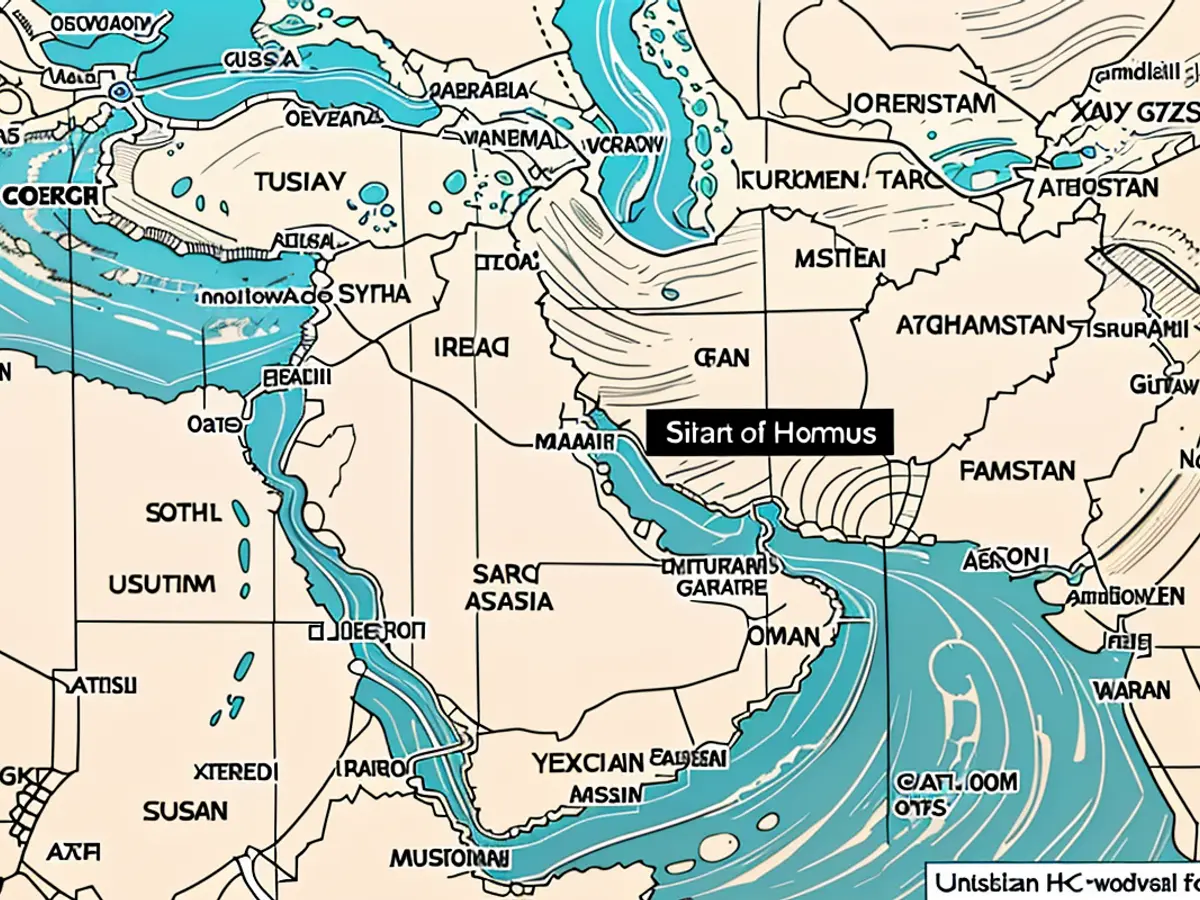A vital 21-mile-long waterway serves as a pathway to economical fuel sources, yet it faces potential peril.
The narrow waterway, measuring only 21 miles (34 kilometers) wide at its narrowest point, is labeled as "the world's most significant oil transit chokepoint" by the US Energy Information Administration.
Approximately 20% of the world's daily oil trade transits through this strait, mentioning Simone Tagliapietra, a senior fellow at the Brussels-based think tank Bruegel. Plus, around a quarter of the daily global trade in liquefied natural gas passes through this route.
As the instability in the Middle East increases, so does the risk of disrupting the oil flow through the strait or even stopping it entirely.
Last week, Iran retaliated against Israel by firing missiles at the country, following Israel's assassination of Hassan Nasrallah, the leader of Hezbollah, a Lebanon-based militant group backed by Iran, along with others. Israel's Defense Minister, Yoav Gallant, shared with CNN on Sunday that the nation was planning to retaliate against Iran, with all options on the table.
Tagliapietra described the existing situation as extremely serious, adding that any escalation of tensions related to the Strait of Hormuz could result in consequences that echo the oil shock of the 1970s, when oil prices dramatically increased.
In 1973, oil prices skyrocketed as key Arab oil exporters halted the delivery of the commodity to the United States and other nations, in response to their support of Israel during that year's Arab-Israeli war. The embargo led to fuel scarcities in the US and long lines at gas stations.
Since Israel began targeting Hezbollah in late September, oil prices have climbed, but not by a significant margin, as traders are more concerned about weak demand in struggling China and an excess of global oil supply.
The price of a barrel of Brent crude, the global benchmark, has risen by more than 5% to $77, since September 17, the day when pagers belonging to Hezbollah members exploded simultaneously across Lebanon, thanks to an attack apparently orchestrated by Israel. West Texas Intermediate, the US oil benchmark, has risen by 3.6% in the same period, trading near $74 per barrel.
However, if the oil trade through the vital Strait of Hormuz falters, oil prices could surge beyond $100 per barrel, according to research firm ClearView Energy Partners, driving gasoline prices skyward.
Richard Bronze, co-founder and analyst at data firm Energy Aspects, stated in a Monday note: "We still believe the probability of Iran disrupting the Strait of Hormuz remains relatively low for now. But, Iran's decision-making has become less predictable."
"If Israel responds forcefully this time - for example, with a major strike on Iranian nuclear sites - we cannot rule out Iran attempting to block the strait," he concluded.
The Strait of Hormuz is crucial for global energy business, with approximately 20% of daily oil trade and a quarter of liquefied natural gas passing through it.Recognizing the strategic importance of the strait, any escalation of tensions could lead to oil price increases, potentially surpassing $100 per barrel, as suggested by ClearView Energy Partners.








